Electric Vehicles
About Electric Vehicles
There are more electric vehicles (EVs) on the road every year, including in Alaska. There are two types of EVs that charge from the electric grid. Battery Electric Vehicles (BEV) run solely on electricity stored in batteries, commonly with a range of 250 to 400 miles or more. Plug-in Hybrid Electric Vehicles (PHEV) have a smaller battery and modest all-electric range (often 25-40 miles) as well as an internal combustion drivetrain.
EV charging is generally classified in three main categories
Level 1
Is charging from a standard 120-volt outlet. Typical power is 1-1.8 kW and can add 2-5 miles of range per hour. Charging overnight is often enough to drive 20-40 miles per day.
Level 2
Is faster charging at home, commercial, or public sites with a 208/240-volt outlet or hardwired EV charger. Typical power is 5-19 kW and can add 10-30 miles of range per hour.
Level 3
Is DC fast charging at public sites or commercial sites. Typical power is 50-250 kW or more and can add 150-350+ miles of range per hour.
Check out the EV Terminology and Resources brochure for more information on EV terminology.
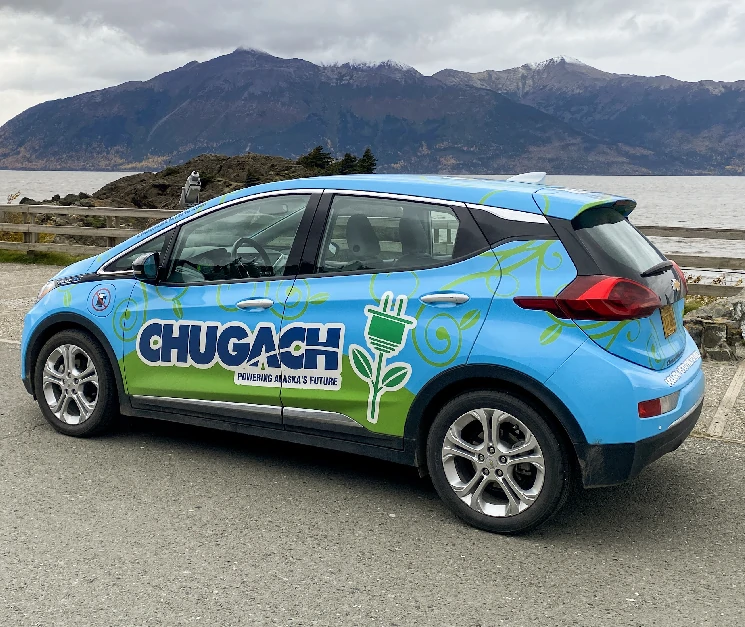
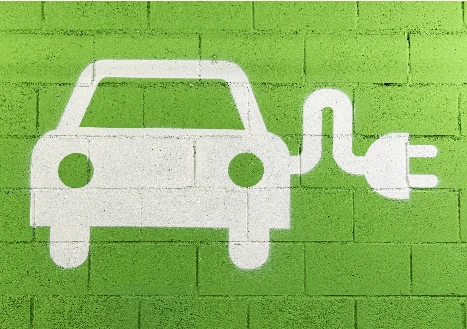
EV Incentives
Chugach offers electric vehicle (EV) charging incentive programs to promote the use of EVs in Alaska. The programs help individuals and businesses establish charging at home, at workplaces, for fleet vehicles, and for public use within the Chugach service area by providing a bill credit after installation. The programs are helping speed the transition to electric transportation, which benefits all members by reducing rates.
The bill credits amounts vary by program and are listed in the overview below.
| Program Name | Incentive | Charging Level | Max per Account |
| Residential | $200 | L2 (208-240 volt) | 2 |
| Commercial – Level 2 | Up to $1,000 | L2 (208-240 volt) | 2 |
| Commercial – DC Fast Charging | Up to $5,000 | L3 DC Fast Charging | 2 |
Current EV Incentive Programs
Applicants may apply for more than one program per location, but an individual charger cannot receive funding more than once from Chugach. An applicant may receive funding from other sources without affecting their eligibility under a Chugach program.
Check out the EV Charging Incentive Program Information sheet for more details.
EV Program Contacts:
Mark Henspeter at mark_henspeter@chugachelectric.com, (907)762-4210, or Sean Skaling at sean_skaling@chugachelectric.com, (907)762-4192.
Benefits of Electrification
Using electricity as a transportation fuel provides a number of benefits. First, “fueling” a vehicle with electricity is less expensive than liquid fuels. Another benefit is reduced transportation emissions such as carbon dioxide, which are 60-70 percent lower when powered by Chugach, compared to gasoline. A third benefit is that the use of electricity for EV charging helps spread the fixed costs of a utility like Chugach across greater sales, which puts downward pressure on members’ electric rates.
EV Trends
Every six months Chugach conducts a count of electric vehicles (both all-electric and plug-in hybrids) registered in Alaska. The number of registered EVs in Alaska and in the Municipality of Anchorage (MOA) has risen steadily in recent years, as shown in the graphs.
There are a wide variety of BEV and PHEVs registered in the MOA, and the number of EVs is the fastest growing population in the state, at approximately 50 new EVs per month. As of January 2025, there were nearly 2,000 EVs registered within the MOA, for a density of approximately 67 EVs per 10,000 residents. The most common BEV brand is Tesla at over 40%, followed by Chevy and Ford. The most popular 2024-2025 model year electric vehicles are the Tesla Model Y, Hyundai Ioniq5, and Ford F-150 Lightning.
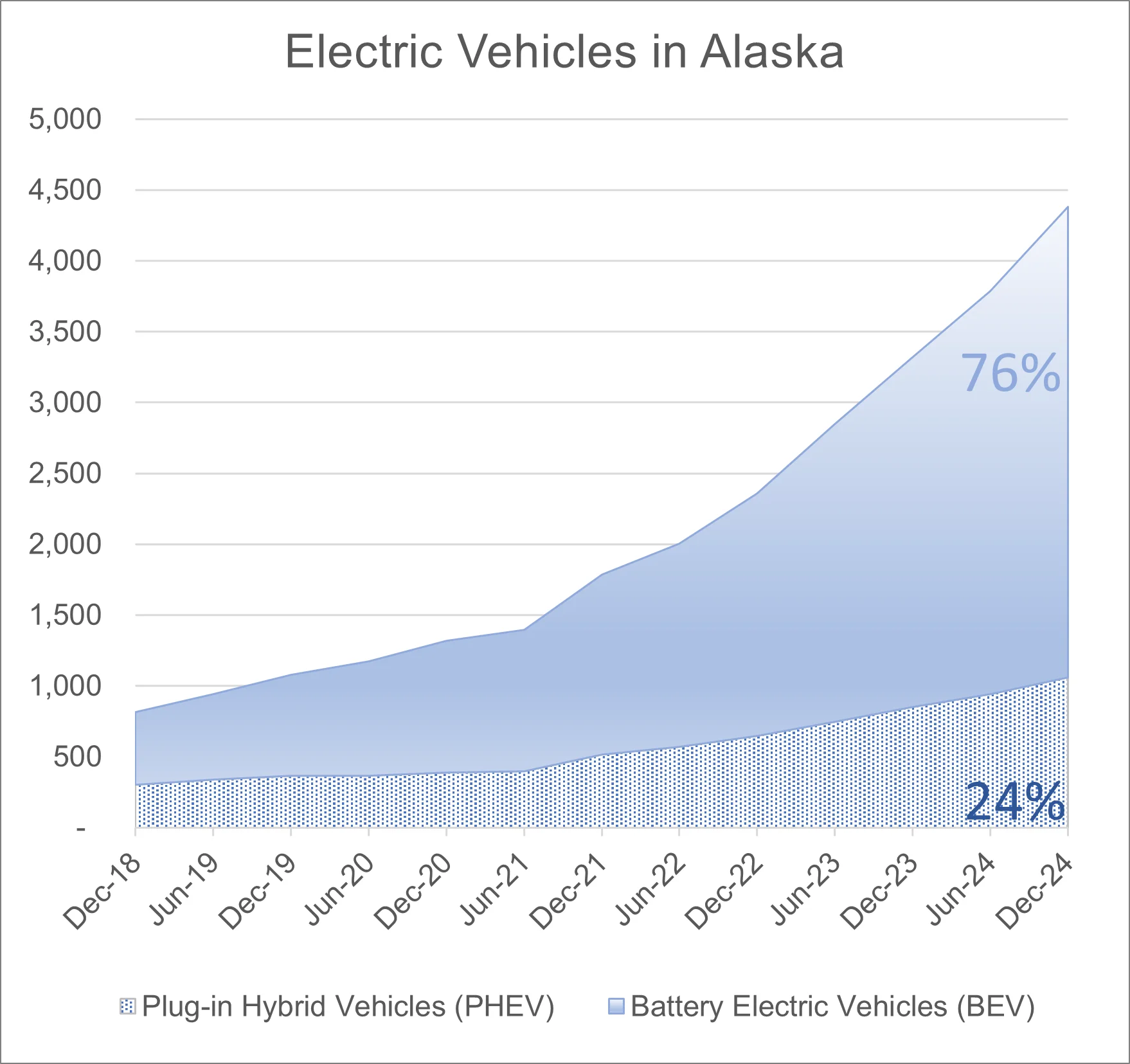
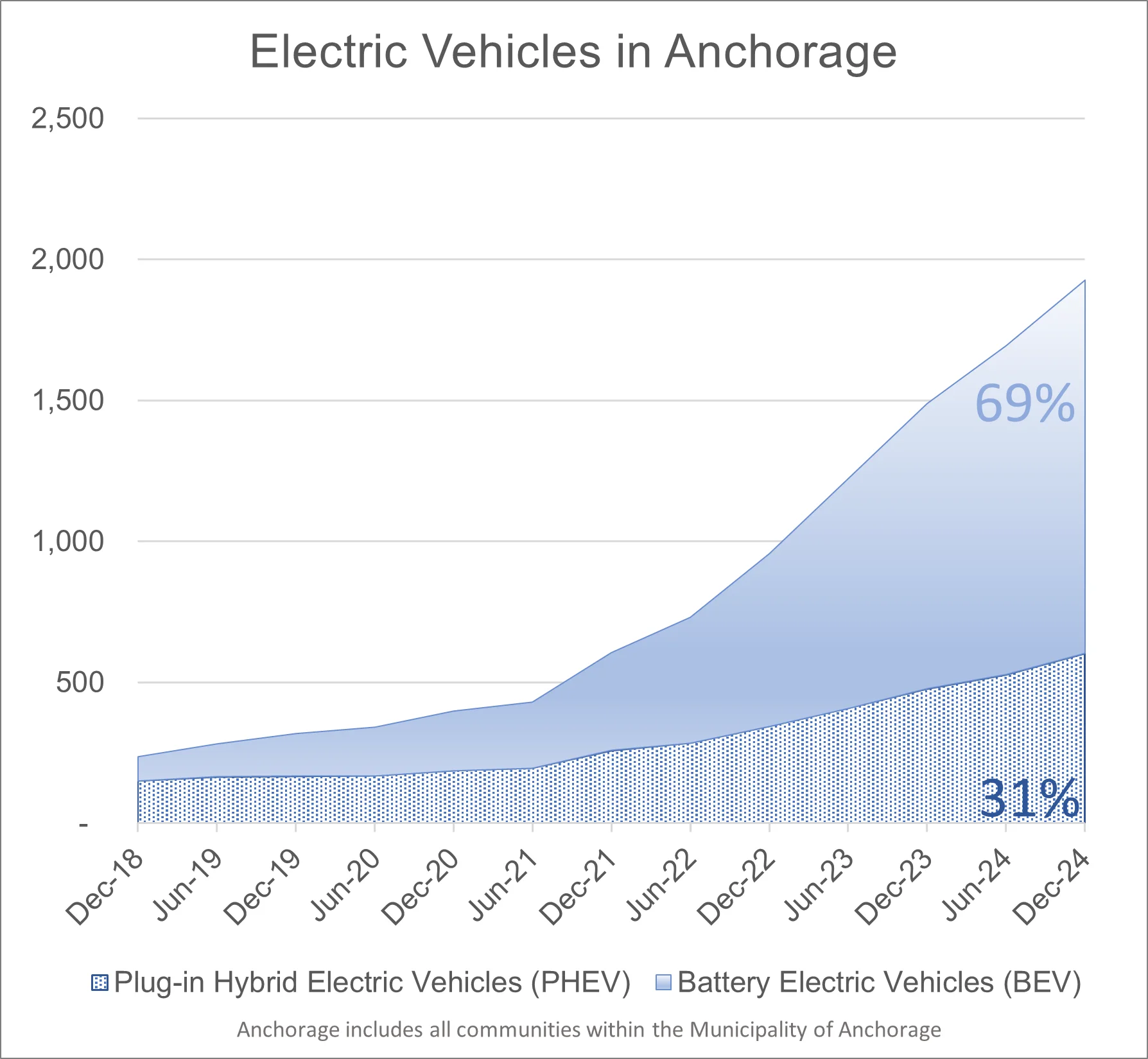
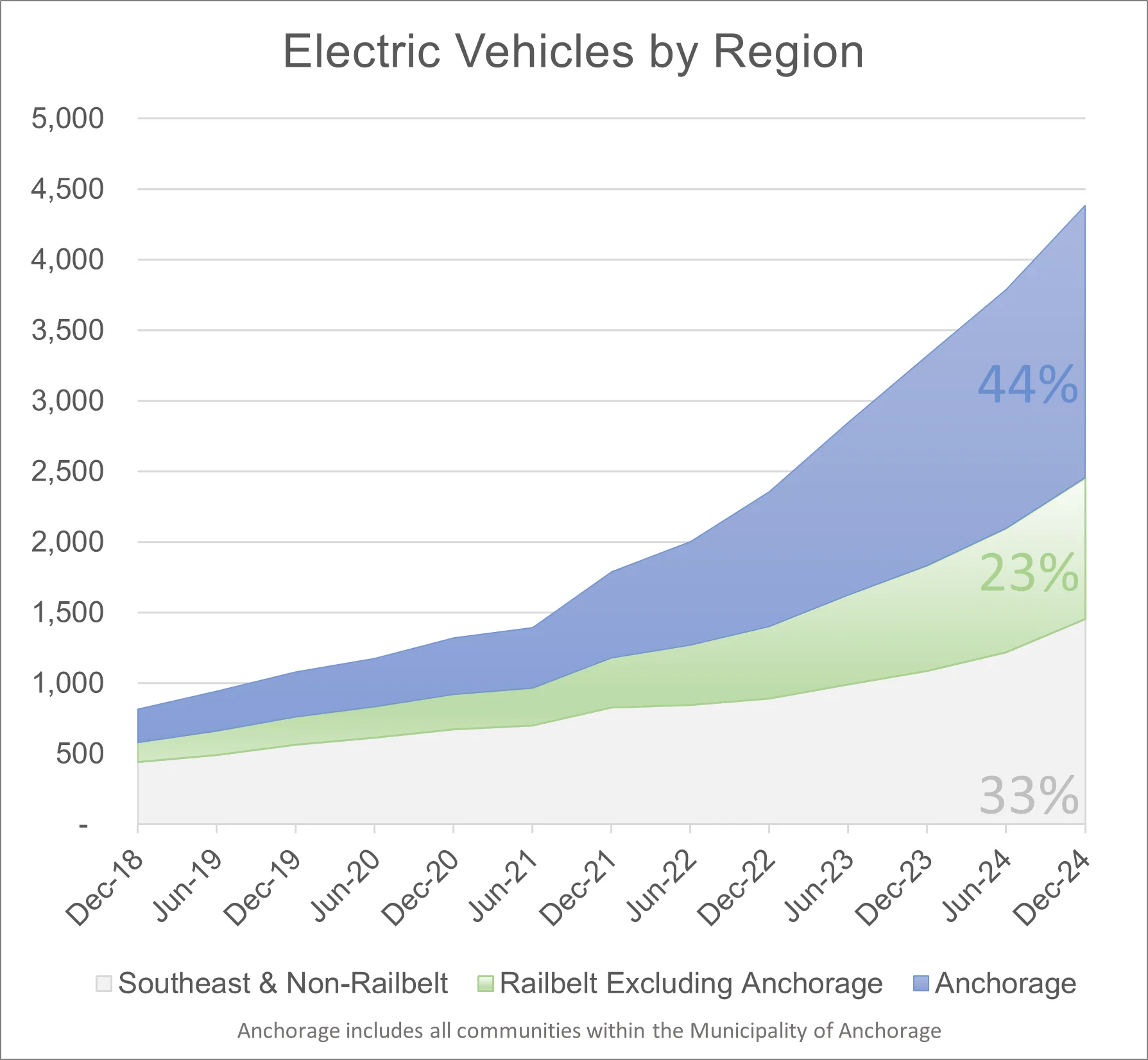
Cost of Charging an EV
The cost* of charging an EV is about 43% less than the cost of fueling an internal combustion vehicle when fuel cost is $3.75 per gallon and electricity is $0.23 per kWh, approximately Chugach’s residential rate.
Try Chugach’s EV Calculator to compare the cost of charging an EV to the cost of fueling a gasoline vehicle. It also calculates carbon dioxide emissions reduction based on Chugach’s generation mix of natural gas, hydro and wind.
Alternatively, the Alaska Electric Vehicle Calculator developed by the Alaska Center for Energy and Power provides additional information on energy costs around Alaska and seasonal energy consumption.
*Assumes average electric vehicle efficiency of 2.9 miles per kWh and the average gasoline vehicle efficiency of 27.0 miles per gallon.
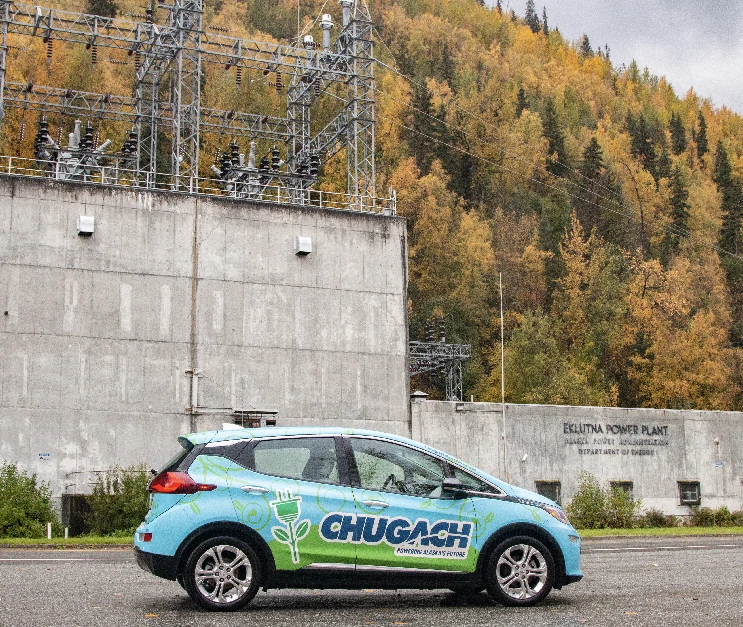
EV Emissions
The emissions from driving an EV are produced at the power plants where electricity is generated, rather than being emitted from the vehicle directly. Chugach has a generation portfolio comprised of natural gas, hydro, and wind. An electric vehicle powered by the Chugach system is responsible for approximately 66% less carbon dioxide than an average-efficiency gasoline-powered passenger vehicle. In addition, an EV emits no cold-start carbon monoxide or other pollutants. Chugach members who have rooftop solar panels can further reduce the carbon emissions of driving an EV.
Efficiency of EVs
The main reason for the low cost per mile is due to the efficiency of the electric drive system compared to an internal combustion engine drivetrain. According to the US Department of Energy, about 12 to 30% of the energy in hydrocarbon fuel is converted to forward momentum in an internal combustion engine vehicle, compared to 60 to 73% of the electricity in an EV battery. An EV also recaptures energy while braking, which can increase total efficiency to over 90%.
Seasonal variation in temperature will affect the amount of energy consumed by an EV for heating and cooling. Efficiency during the winter is typically 20-30% lower for many modern EVs since electricity is used to maintain the battery temperature and heat the cabin. EVs are generally most efficient around town where speeds are lower and more energy is regenerated in stop-and-go traffic. During cold winter months efficiency may drop around town since extra energy is used to warm the cabin on frequent short trips. Parking in a garage helps to reduce the energy used for heat.
The US Department of Energy provides interactive graphics that provide energy requirements for different driving conditions.
Charging Your Electric Vehicle
EV charging can be flexible, cost-effective, and convenient. Planning for your charging needs when considering a new EV helps maximize the value and convenience of your charging experience. Your vehicle type, weekly mileage, schedule, and home electrical capacity can influence your charging solution.

